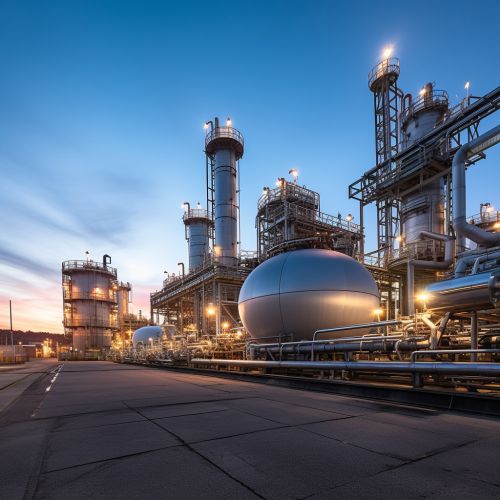Ethylene
Introduction
Ethylene (C2H4) is a colorless, flammable gas that is slightly sweet and musky in odor. It is the simplest alkene and is a vital building block in the petrochemical industry. Ethylene is also a plant hormone that regulates a wide range of biological processes in plants.
History
The discovery of ethylene dates back to the ancient Egyptians, who recognized that wounded fig trees released a substance that sped up the ripening of figs. However, it was not until the 19th century that this substance was identified as ethylene. In 1795, four Dutch chemists, Johann Rudolph Deimann, Adrien Paets van Troostwyck, Anthoni Lauwerenburgh, and Nicolas Bondt, produced ethylene by heating ethanol with sulfuric acid. They named it 'olefiant gas', from the Latin 'oleum', meaning oil, and 'facere', to make, because it formed an oily droplet on contact with chlorine.
Production
Ethylene is primarily produced from hydrocarbons through a process known as steam cracking. This process involves the breaking down of complex hydrocarbons into simpler ones by heating them to high temperatures. The most commonly used feedstocks for ethylene production are naphtha, gas oil, and natural gas liquids (NGLs) such as ethane, propane, and butane.


Uses
Ethylene has a wide range of uses in various industries. It is primarily used in the production of polyethylene, a common plastic material. Other derivatives of ethylene include ethylene oxide, ethylene dichloride, and ethylbenzene. These compounds are used in the manufacture of detergents, plastics, and synthetic fibers. Ethylene is also used in the agriculture industry as a plant hormone to regulate growth and ripening of fruits.
Biological Role
In plants, ethylene acts as a hormone that regulates various aspects of growth and development. It is involved in processes such as fruit ripening, leaf abscission, and the response to environmental stress. The perception of ethylene by plants is a complex process that involves a family of receptors located in the endoplasmic reticulum.
Environmental Impact
While ethylene is not directly harmful to the environment, the process of its production can have significant environmental impacts. The steam cracking process used to produce ethylene releases large amounts of carbon dioxide, a greenhouse gas that contributes to global warming. Additionally, the extraction and refining of the hydrocarbon feedstocks used in ethylene production can have detrimental effects on the environment.
Safety
Ethylene is a highly flammable gas and can form explosive mixtures in air. It is not toxic, but high concentrations can displace oxygen and lead to asphyxiation. In industry, safety measures are taken to prevent the accumulation of ethylene in enclosed spaces and to ensure that it is properly ventilated.
